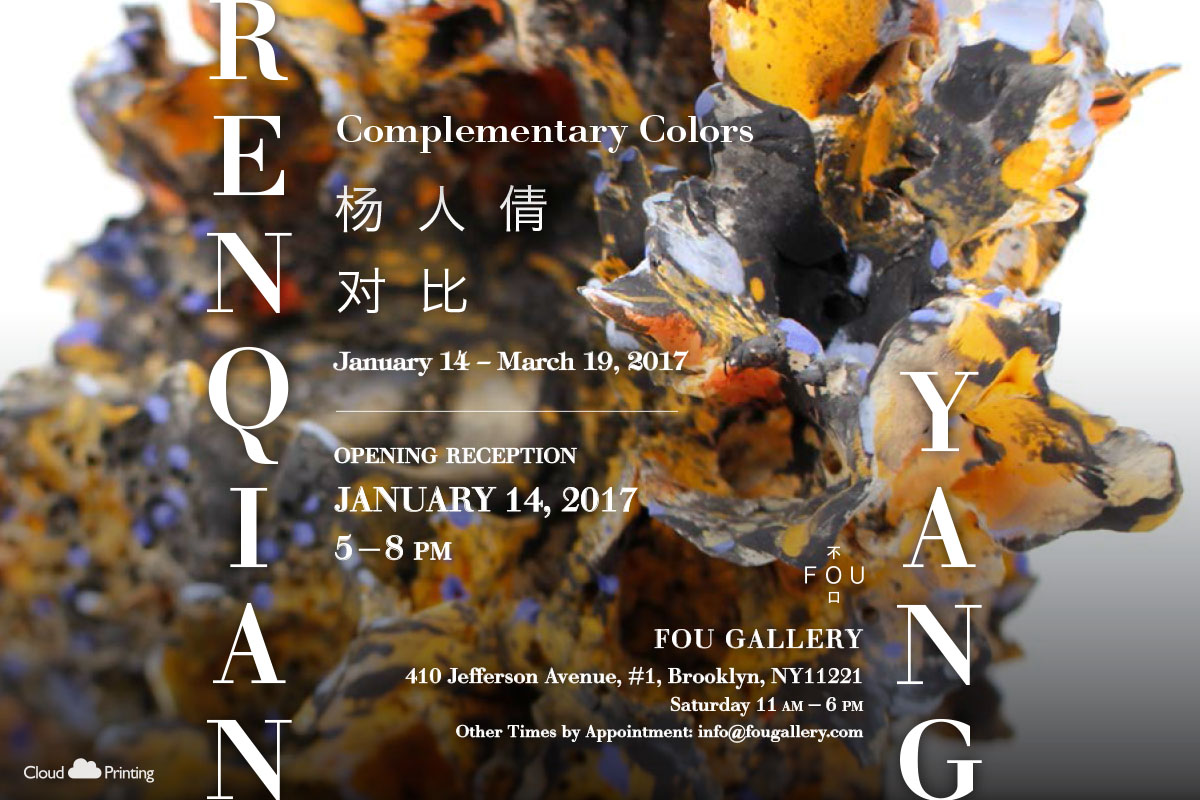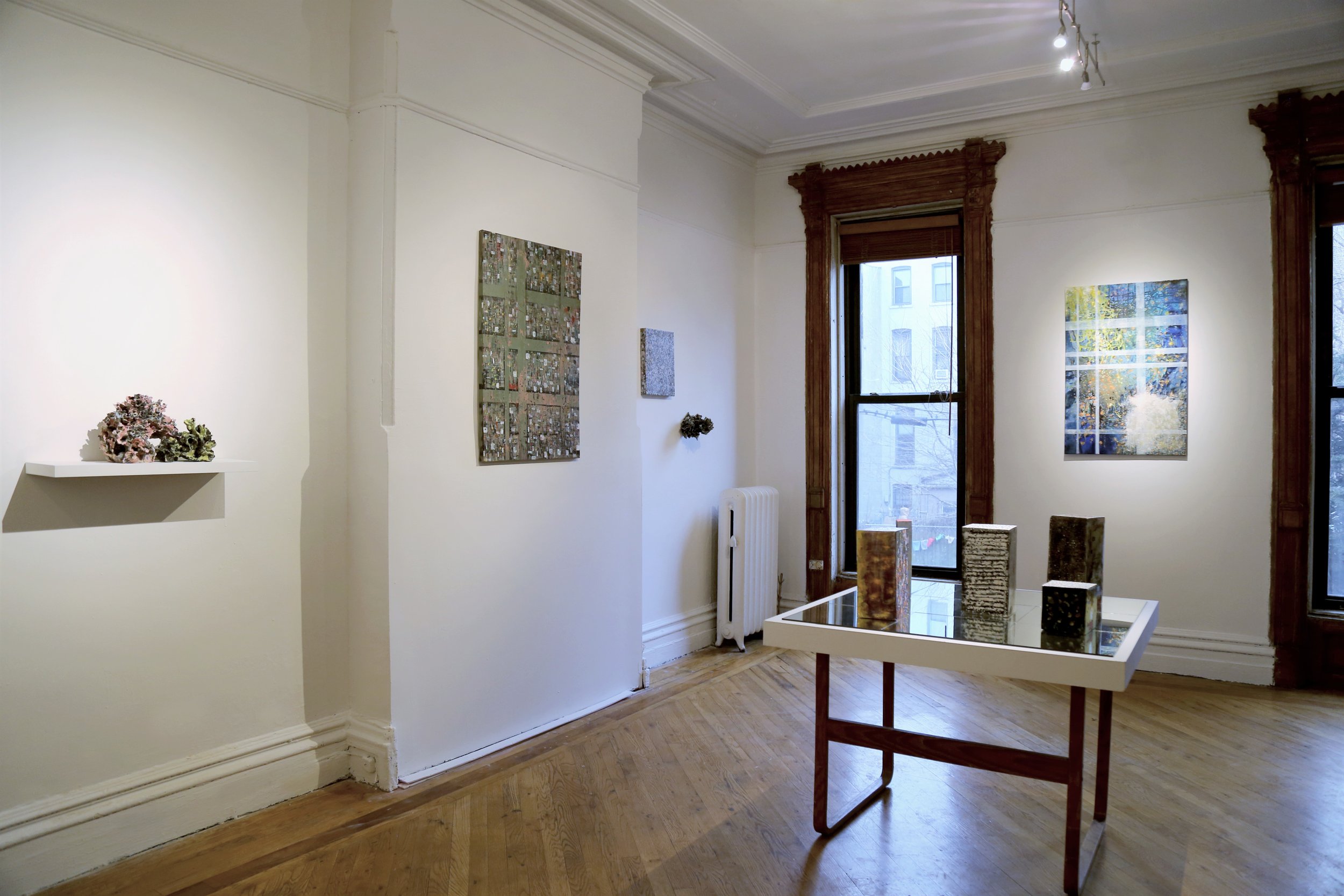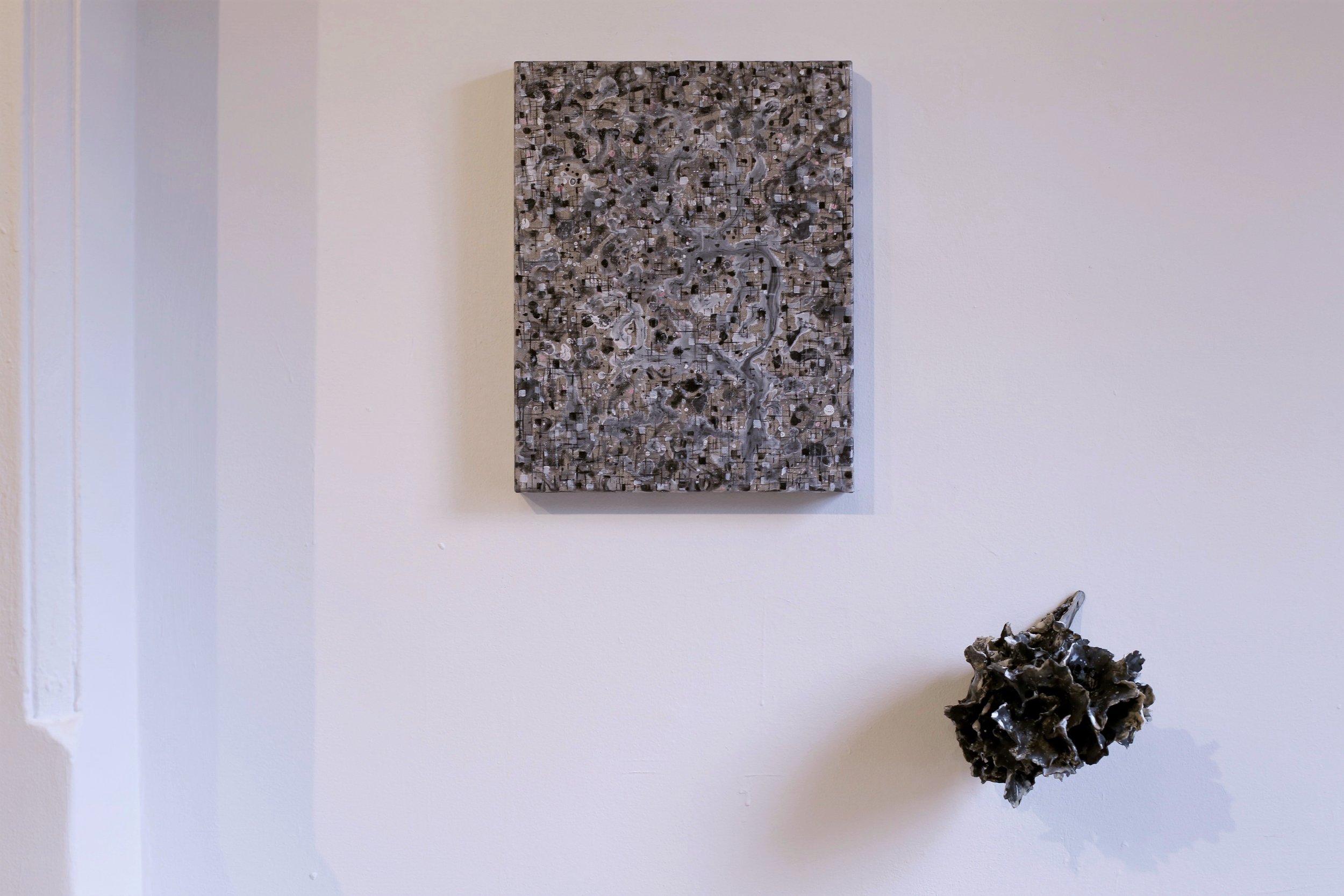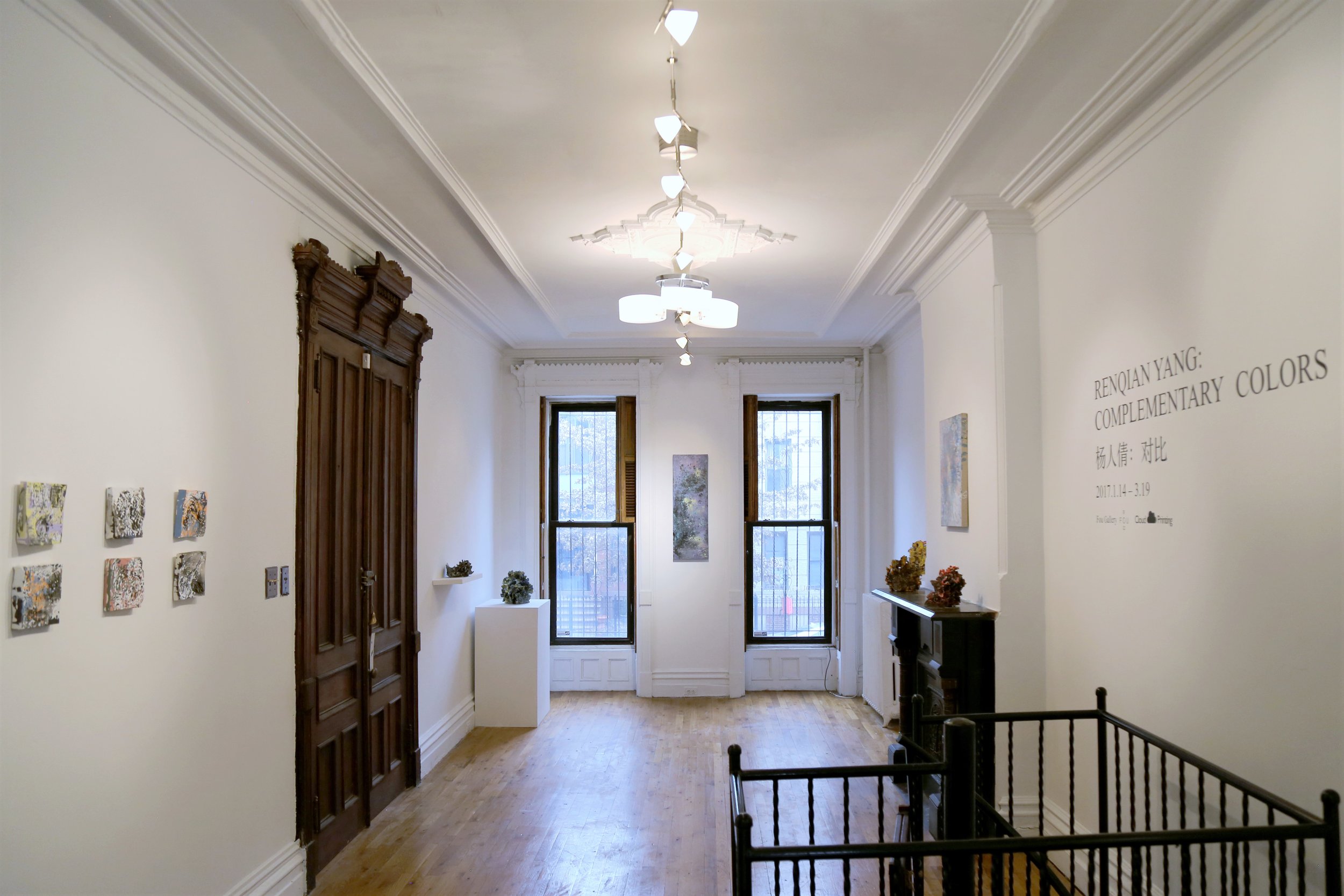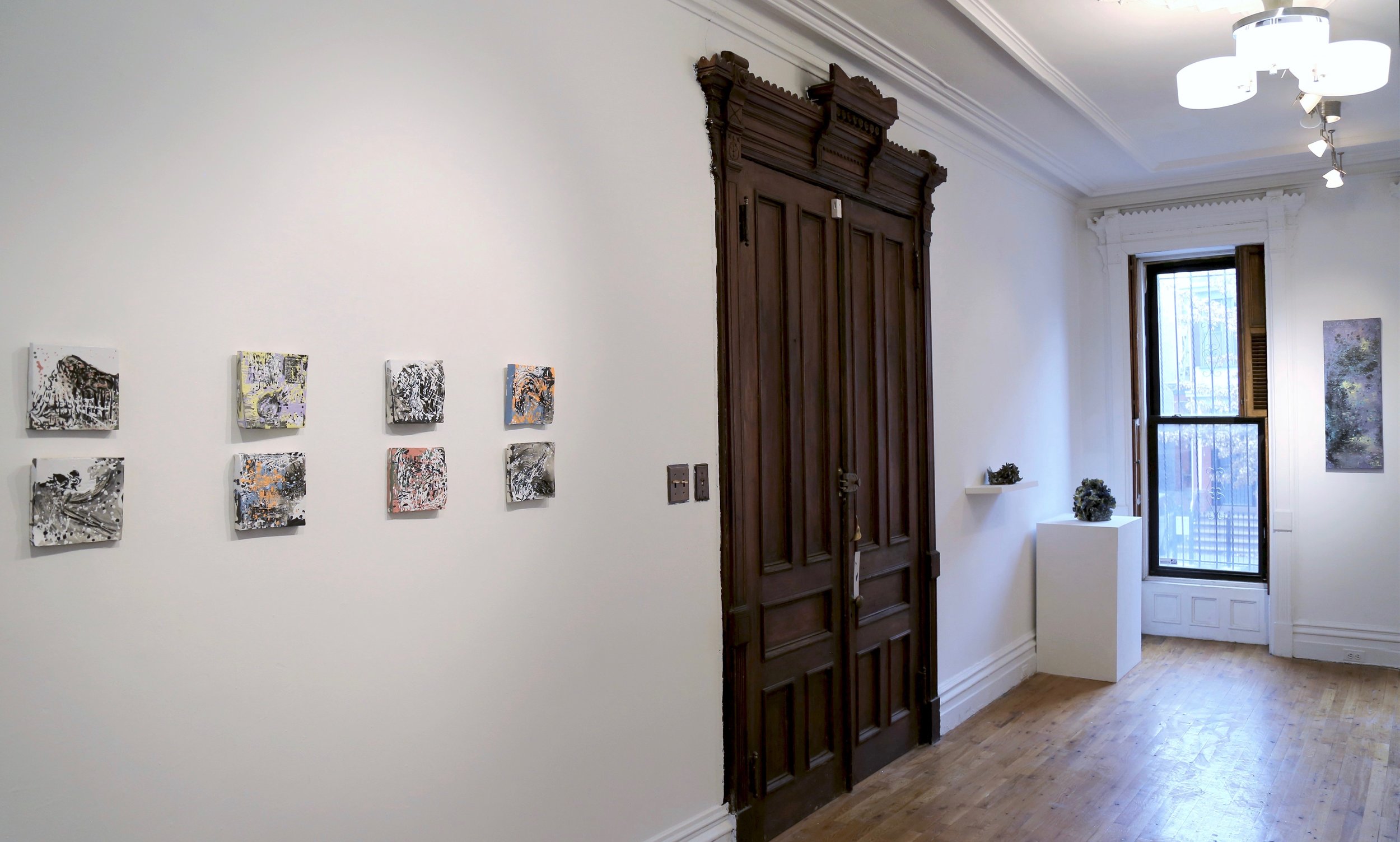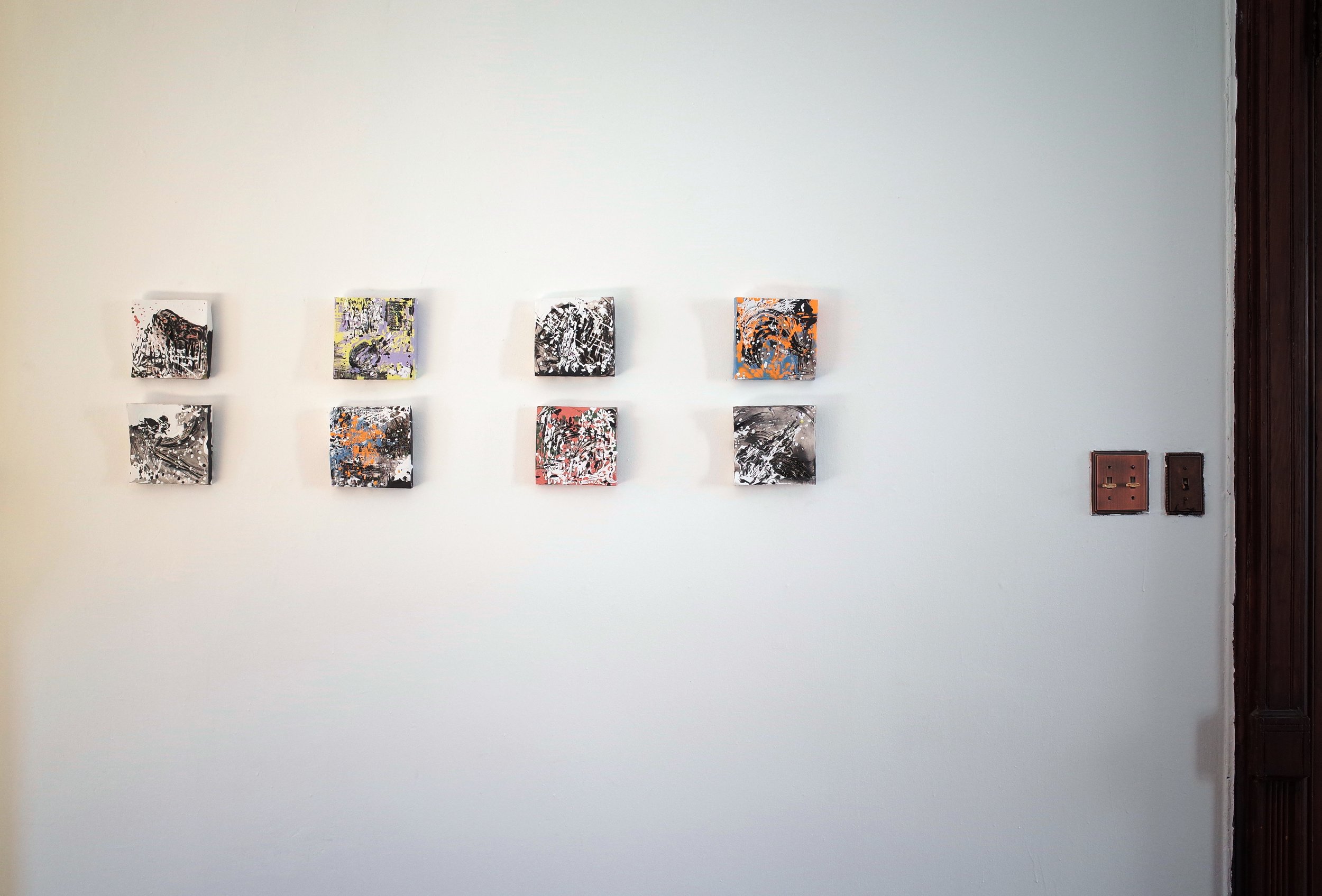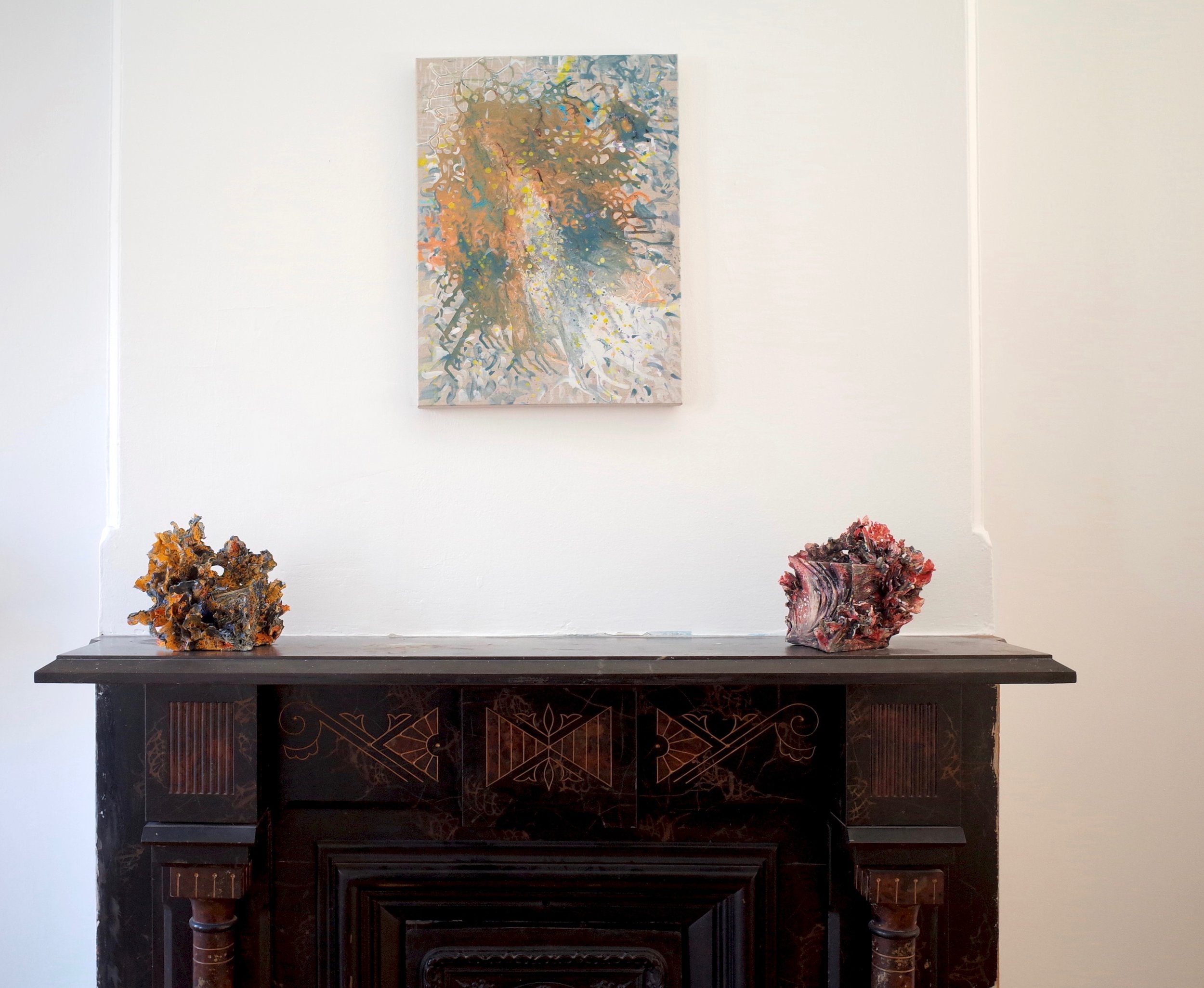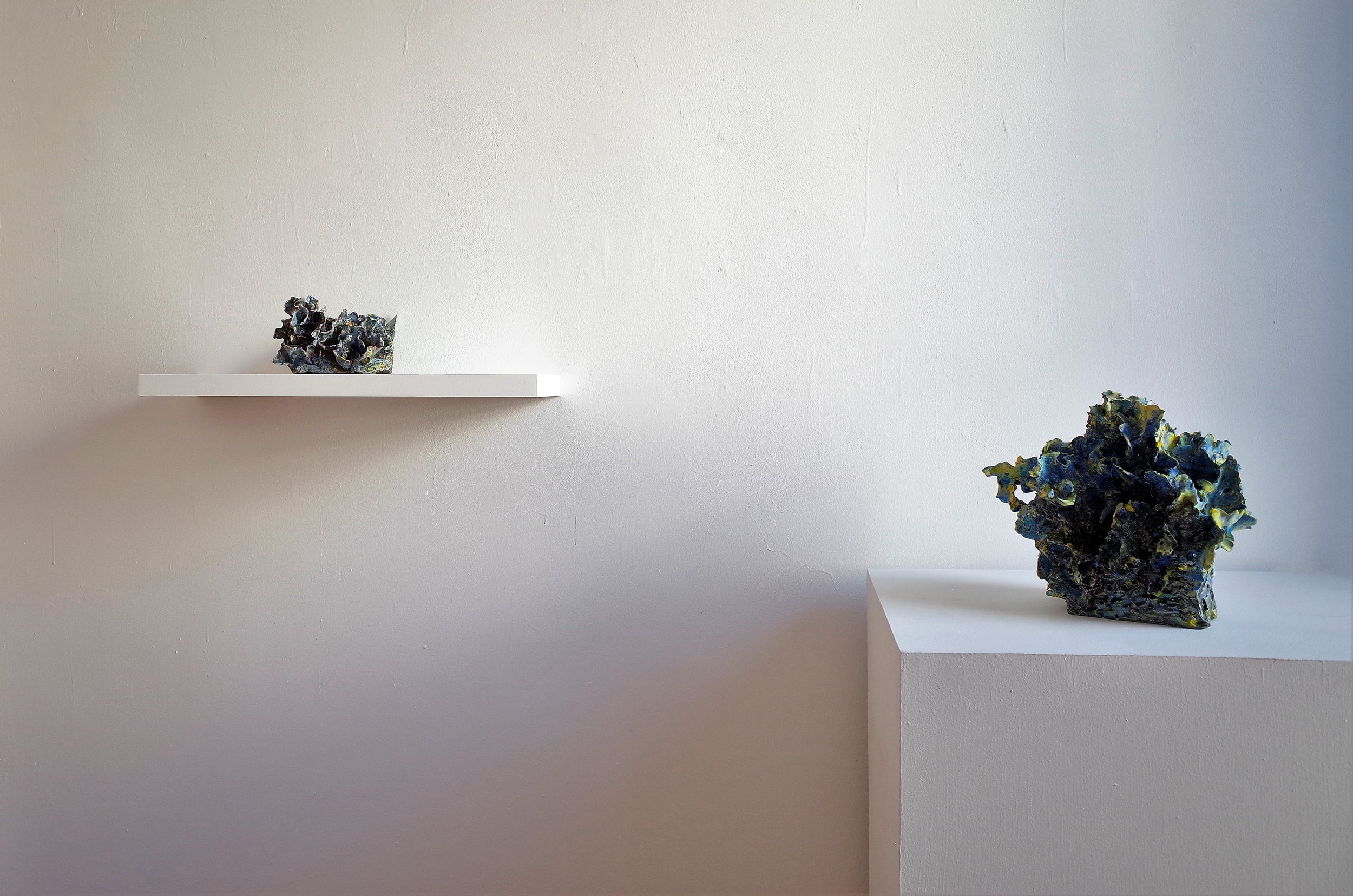Renqian Yang: Complementary Colors 杨人倩:对比
January 14—March 19, 2017 | 2017年1月14日—2017年3月19日
Opening Reception|开幕酒会: January 14, 2017, 5-8 pm
Artist
Fou Gallery is pleased to announce the new exhibition Renqian Yang: Complementary Colors, which will be on view from January 14 to March 19, 2017. The show presents artist Renqian Yang’s recent practices with ceramics, paintings, and prints. The exhibition addresses the unity and the contradiction of dichotomies using the language of complementary colors, textures, and forms. This is Yang’s first solo exhibition in New York. The opening reception will be held on January 14, 5-8 pm.
Complementary colors are colors that are directly opposite each other on the color wheel. When adjacent to each other, complementary colors intensify. Yet, when combined in due proportion, they cancel each other out and produce a grayscale color. As among the first to write about the laws of visual contrast, Leonardo da Vinci observed that the finest harmonies are those between colors exactly opposed, a concept he called retto contrario. The idea of complementary colors resonates with yin and yang in Chinese philosophy—seemingly opposite forces may actually be complementary and interconnected in the natural world. They may give rise to each other as they interact with each other.
Interested in the concept of interdependent binaries, Yang attempts to present sets of complementary colors in mixed materials, including clay, thread, acrylic, ink and paper. By revealing various contradictions that exist in the color field and in natural world, Yang’s work addresses the unity and the contradiction of dichotomies—restriction and freedom, complexity and simplicity, representation and abstraction. She believes that Arthur Schopenhauer’s writing provides a fine explanation of this concept: “The life of every individual viewed as a whole is really always a tragedy, but gone through in detail, it has the character of a comedy.”
Juxtaposed in groups in the gallery space, Yang’s ceramic sculptures and acrylic paintings have abstract and organic forms. However, the images are based on visualization of urban sprawl—the expansion of human populations away from central urban areas into low-density communities and rural land. Ironically, although the sprawl creates environmental degradation, the visual image appears like the expansion of nature. Like flowers that sprout from solid rocks and slowly spread, Yang’s work captures the frozen moment of blossoming in opposition to manmade constraints and the harmony that emerge in the uncontrolled chaos.
*The press release is written by Echo He and edited by Andrew Shiue.
Read the full press release click here.
查看完整的新闻稿,请点击这里。
Events
2017.3.4 Spring Exhibition Tour and Dessert Tasting
2017.3.18 Artist Talk and Closing Reception
News
Costigan, Johanna,“否画廊:生活和艺术互为补充”,Neocha,2019.10.21.
Costigan, Johanna. “Fou Gallery.” Neocha, 2019.10.21.
Checklist
作品列表


